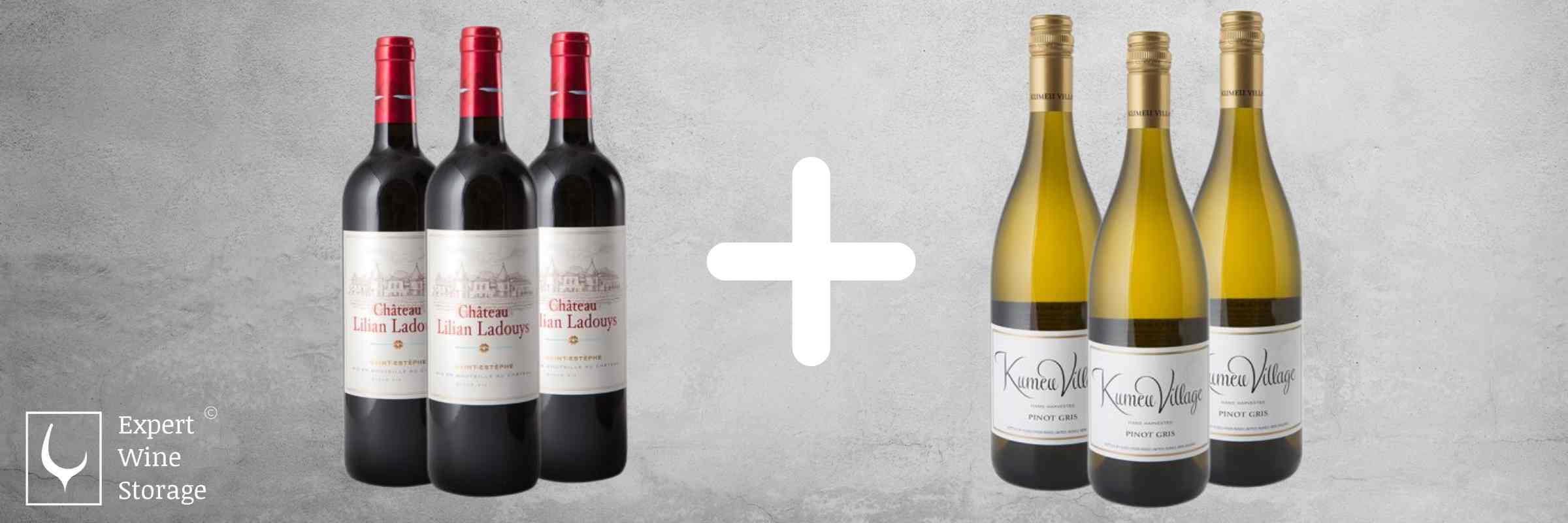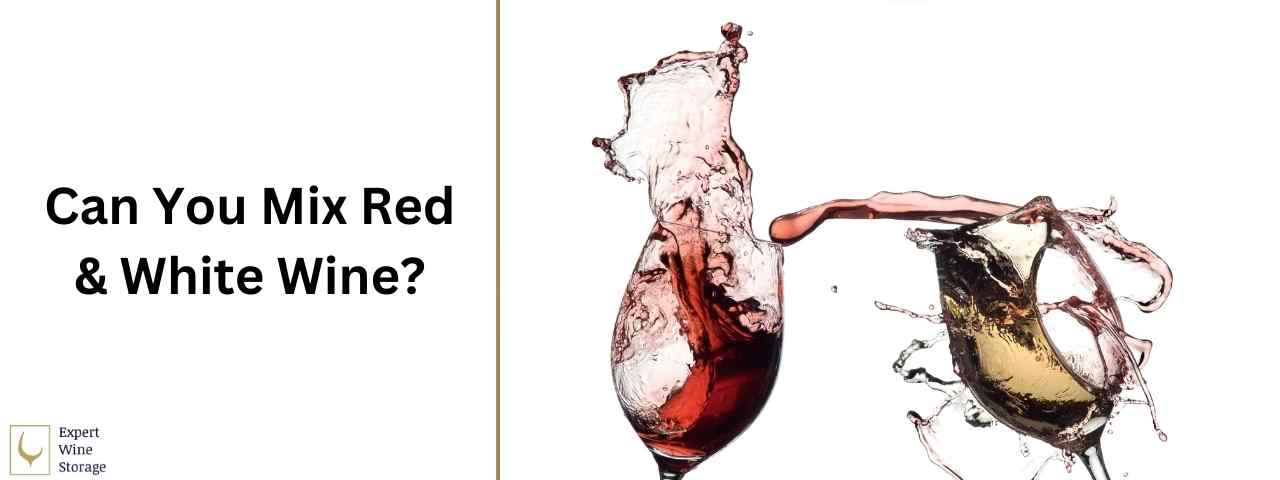Understanding Red And White Wines

Red wine is made from dark-colored grapes and gets its color from the grape skins during fermentation. It is typically fuller-bodied, richer in tannins, and has flavors of dark fruits like cherries and berries. White wine, on the other hand, is made from light-colored grapes with minimal skin contact. It is generally lighter-bodied, crisper in acidity, and exhibits flavors of citrus fruits and tropical notes. Both red and white wines offer diverse flavor profiles that can be enjoyed on their own or paired with a variety of dishes.
Definition And Characteristics Of Red Wine
Red wine is a type of wine made from dark-colored grapes. During the fermentation process, the grape skins remain in contact with the juice, giving red wine its distinct color and flavor profile. It is known for its fuller body and higher tannin content compared to white wine. Red wines often exhibit flavors of dark fruits such as cherries and berries, along with notes of spices and earthiness. They are typically enjoyed at room temperature and pair well with rich meat dishes and aged cheeses.
Definition And Characteristics Of White Wine
White wine is a type of wine made from light-colored grapes. Unlike red wine, the grape skins are separated from the juice during fermentation, resulting in a lighter color and lower tannin content. White wines are known for their crisp and refreshing flavors, often exhibiting notes of citrus fruits, green apple, and floral aromas. They are typically served chilled and pair well with seafood, poultry, and light pasta dishes. White wines offer a wide range of styles, from dry to sweet, making them versatile and appealing to different palates.
The Art Of Wine Blending

Wine blending is a fascinating art form that allows winemakers to create unique and balanced flavors. By combining different grape varieties or even wines from different vintages, they can achieve complexity and depth in their creations. Blending requires skill and expertise, as winemakers carefully select the right proportions of each wine to achieve the desired taste profile. This process can result in exceptional wines that showcase the best qualities of each component. Whether it’s a red blend or a white blend, wine blending adds an element of creativity and craftsmanship to the winemaking process.
Reasons For Blending Red And White Wines
Blending red and white wines offers a range of benefits and possibilities. One reason is taste exploration, as combining the robust flavors of a red wine with the crispness of a white can result in a unique and exciting taste experience. Another reason is achieving balance, as blending can help soften the tannins of a red wine or reduce the acidity of a white wine. Winemakers have been blending different varieties for centuries to create specific flavor profiles or achieve harmony in their wines.
Benefits And Challenges Of Blending Different Types Of Wine
Blending different types of wine offers both benefits and challenges. On the positive side, blending allows for the creation of unique and complex flavor profiles that can’t be achieved with a single varietal. It also provides an opportunity to balance out certain characteristics, such as reducing the acidity of a white wine or softening the tannins in a red wine. However, blending requires skill and knowledge to ensure that the flavors complement each other rather than clash. Achieving the perfect blend can be a challenge, but it’s worth it for those looking to explore new taste experiences in their wine.
Blending Red And White Wines

Blending red and white wines can create unique flavor profiles and enhance the overall drinking experience. When blending, it’s important to consider factors such as the grape varieties, acidity levels, and tannin content of each wine. Some popular red and white wine combinations include Shiraz with Chardonnay or Cabernet Sauvignon with Sauvignon Blanc. Experimenting with different blends allows you to discover new taste sensations and find the perfect balance of flavors. Whether you’re a home winemaker or simply want to explore new wine combinations, blending red and white wines opens up a world of possibilities.
Factors To Consider When Mixing Red And White Wines
When blending red and white wines, there are several factors to consider. First, take into account the grape varieties of each wine. Some grapes may complement each other well, while others may clash in flavor profiles. Additionally, consider the acidity levels of both wines. Balancing the acidity can create a harmonious blend. Lastly, take note of the tannin content in red wines. Mixing a high-tannin red with a low-tannin white can help achieve a balanced and smooth combination. By carefully considering these factors, you can create a perfectly blended wine that tantalizes your taste buds.
Popular Red And White Wine Combinations
Popular red and white wine combinations include:
- Rosé: A blend of red and white grapes, rosé wines offer a refreshing and versatile option.
- Sparkling Wine: Combining red and white grapes can create a bubbly delight, perfect for celebrations.
- White Zinfandel: This blush wine is made from red Zinfandel grapes with minimal skin contact, resulting in a light pink color.
- Pinot Grigio/Pinot Gris: These crisp white wines can be blended with a small amount of Pinot Noir to add complexity.
- Bordeaux Blanc: This white wine from the Bordeaux region often includes Sauvignon Blanc and Semillon grapes.
Experimenting with these popular combinations can lead to delightful new flavors and experiences.
Tasting And Pairing

When it comes to tasting and pairing mixed red and white wines, there are a few things to keep in mind. The combination of flavors can create unique taste profiles that may not be found in single varietal wines. When tasting, pay attention to the balance of acidity, sweetness, and tannins. Experiment with different food pairings to enhance the flavors of the blended wine. For example, a rosé blend can pair well with light salads or seafood dishes, while a sparkling red and white blend can be enjoyed with appetizers or desserts.
Tasting Notes When Blending Red And White Wines
When blending red and white wines, the taste profile can be unique and exciting. It’s important to pay attention to the balance of acidity, sweetness, and tannins. The combination of flavors can create a harmonious blend that is greater than the sum of its parts. Experiment with different food pairings to enhance the flavors even further. For example, a rosé blend can complement light salads or seafood dishes, while a sparkling red and white blend can be enjoyed with appetizers or desserts. Embrace the adventure of mixing red and white wines and discover new taste sensations!
Food Pairings For Mixed Wine Varieties
When it comes to pairing food with mixed wine varieties, the possibilities are endless. The key is to find flavors that complement and enhance each other. For a rosé blend, try pairing it with light salads, grilled vegetables, or seafood dishes. If you’re blending red and white wines for a sparkling combination, consider serving it with appetizers like cheese and charcuterie boards or even desserts like fruit tarts or chocolate-covered strawberries. Get creative and let your taste buds guide you in discovering the perfect food pairings for your unique blend of red and white wines.
Myths And Facts

There are several myths surrounding the mixing of red and white wines, but the truth is that they can indeed be blended together. This practice is common in the wine industry, and it allows winemakers to create unique flavor profiles and balance out certain characteristics. Contrary to popular belief, mixing red and white wines does not result in an inferior or “bad” wine. In fact, it opens up a world of possibilities for experimentation and creativity. So go ahead and explore the art of blending red and white wines with confidence!
Common Misconceptions About Mixing Red And White Wines
There are several common misconceptions about mixing red and white wines. One myth is that blending them will result in an inferior or “bad” wine. However, this is not true. In fact, blending red and white wines allows winemakers to create unique flavor profiles and balance out certain characteristics. Another misconception is that mixing the two colors will create a pink or rosé wine. While some rosé wines are made by blending red and white grapes, not all mixed wines will have a pink hue.
Clarifying The Truth Behind Blending Wine Colors
Many people believe that mixing red and white wines will always result in a pink or rosé wine. However, this is not entirely true. While some rosé wines are made by blending red and white grapes, not all mixed wines will have a pink hue. The color of the resulting blend depends on various factors such as grape variety, skin contact time, and winemaking techniques. Blending red and white wines can produce a wide range of colors, from light blush to deep amber, offering unique sensory experiences for wine enthusiasts to explore.
Conclusion

In conclusion, blending red and white wines offers wine enthusiasts a world of possibilities. By carefully selecting complementary wines and understanding the characteristics of each variety, you can create unique blends that balance flavors and aromas. Whether you’re looking to enhance a wine’s profile or simply make use of leftover bottles, experimenting with wine combinations can be both fun and rewarding. So go ahead, embrace your inner winemaker and embark on a journey to discover new flavors in the art of blending red and white wines. Cheers!
Exploring The Possibilities Of Blending Red And White Wines
Blending red and white wines opens up a world of possibilities for wine enthusiasts. By carefully selecting complementary wines, you can create unique blends that balance flavors and aromas. Whether you’re looking to enhance a wine’s profile or make use of leftover bottles, experimenting with wine combinations can be both fun and rewarding. Embrace your inner winemaker and embark on a journey to discover new flavors in the art of blending red and white wines. Cheers!
Tips For Experimenting With Wine Combinations
Here are some tips to help you get started with experimenting and blending red and white wines:
- Start with small quantities: Begin by blending small amounts of each wine to ensure that you achieve the desired balance of flavors.
- Take notes: Keep track of the ratios and combinations you try, as well as your tasting impressions. This will help you remember what works best for future blends.
- Consider acidity levels: Pay attention to the acidity levels in both red and white wines when choosing combinations. A good rule of thumb is to pair a high-acid white wine with a low-acid red or vice versa for better balance.
- Experiment with different grape varieties: Explore various grape varieties from both red and white wines to discover unique flavor profiles.
- Seek expert advice: Don’t hesitate to consult sommeliers or wine experts for guidance on which wines may work well together based on their characteristics.
Remember, blending wine is all about personal preference, so don’t be afraid to think outside the box and have fun exploring new combinations!
FAQ About Mixing Red And White Wine: Blending The Palette
Q: Can you mix red and white wine together?
A: Yes, it is possible to mix red and white wine together to create a unique blend known as a rosé or blush wine.
Q: What is the most common ratio for mixing red and white wine?
A: The most common ratio for blending red and white wine is 50% red wine to 50% white wine, but you can adjust the ratio based on your preference.
Q: Are there any rules or guidelines for blending red and white wine?
A: There are no strict rules when it comes to blending red and white wine, so feel free to experiment and find the combination that suits your taste buds.
Q: Can blending red and white wine affect the taste and aroma?
A: Mixing red and white wine can alter the flavor profile and aroma of the resulting blend, creating a harmonious balance of both wines’ characteristics.
Q: Should the quality of the red and white wine be the same when blending?
A: It is generally recommended to use wines of similar quality when blending red and white wine to ensure a more balanced and enjoyable final product.
Q: How should blended red and white wine be served?
A: Blended red and white wine can be chilled or served at room temperature, depending on personal preference and the flavor profile of the blend.

Family-owned and proudly serving the Black River Falls area since 1973. Our convenience store, bar, and restaurant within the same building are unique to the area. We accommodate our smokers with a separate facility. We are conveniently located within two miles of the interstate at the corners of Highway 12 and 27. We are your one-stop destination for a restaurant/bar and convenience store.